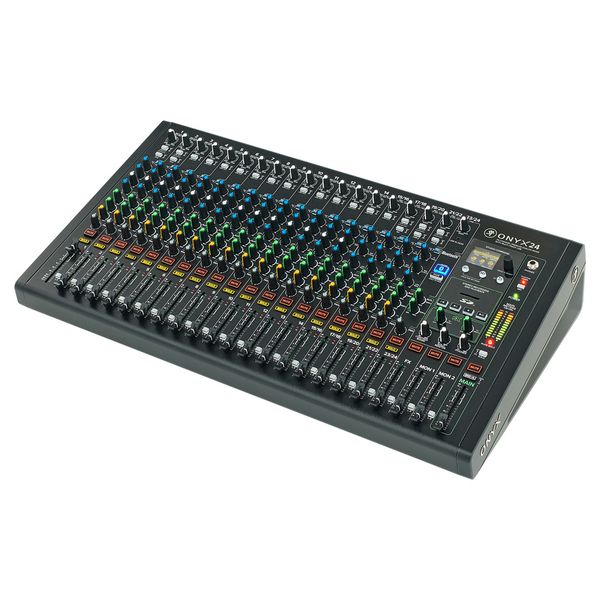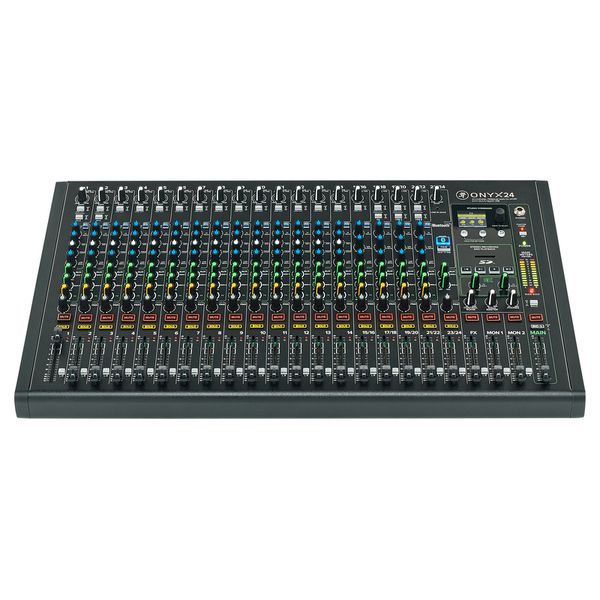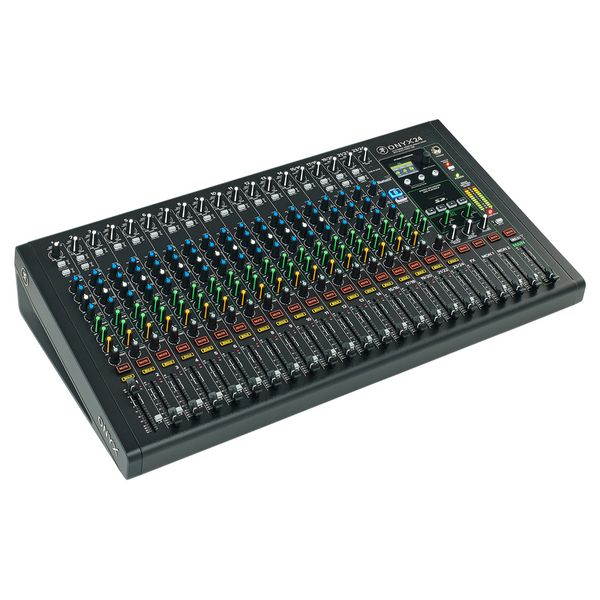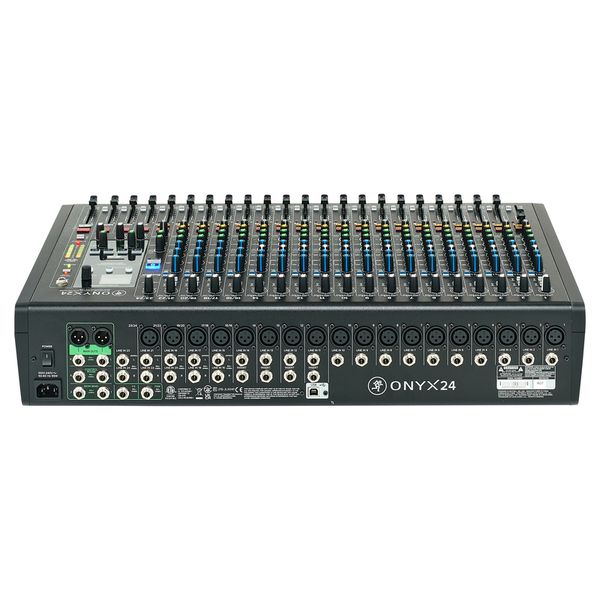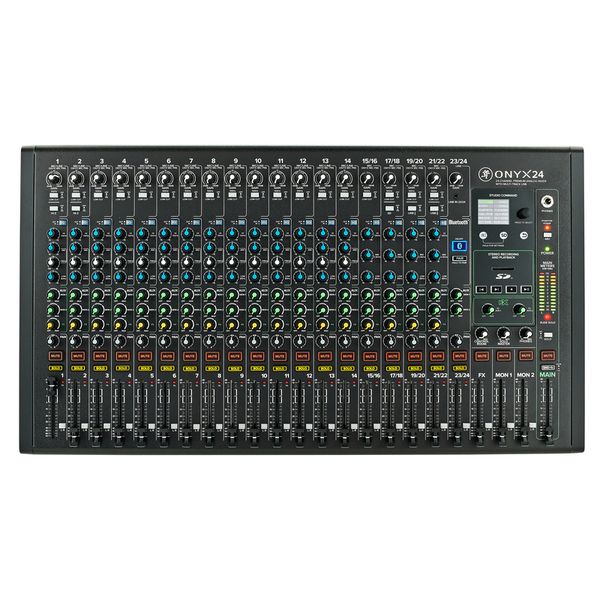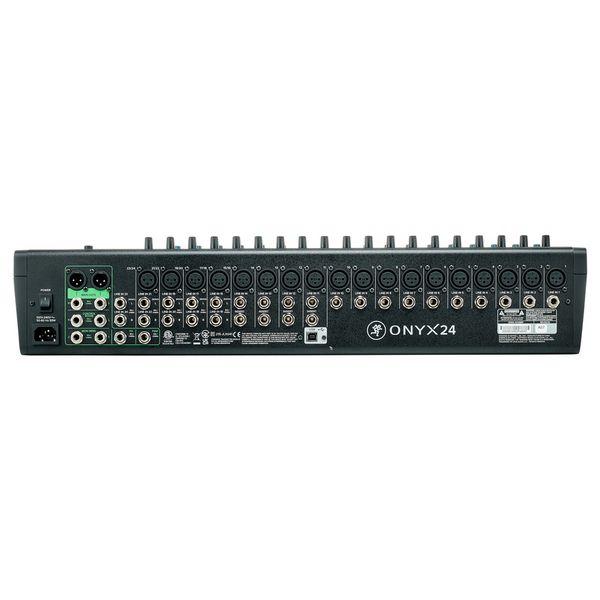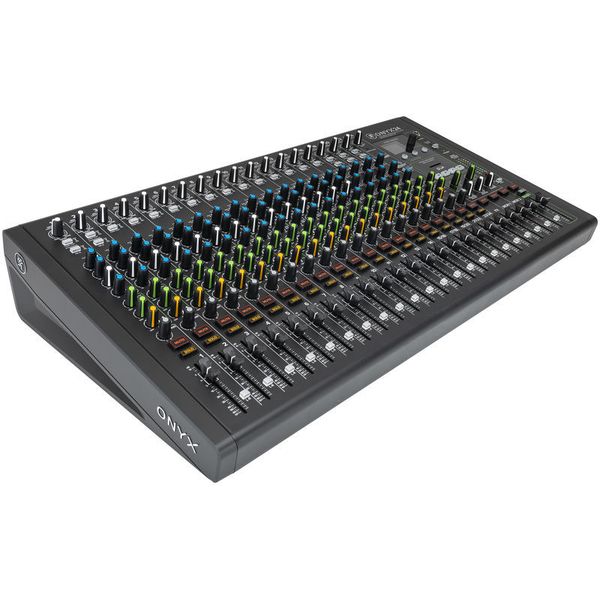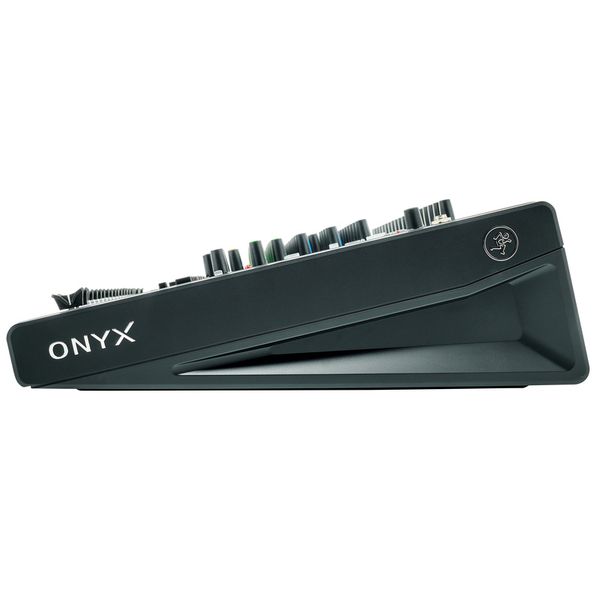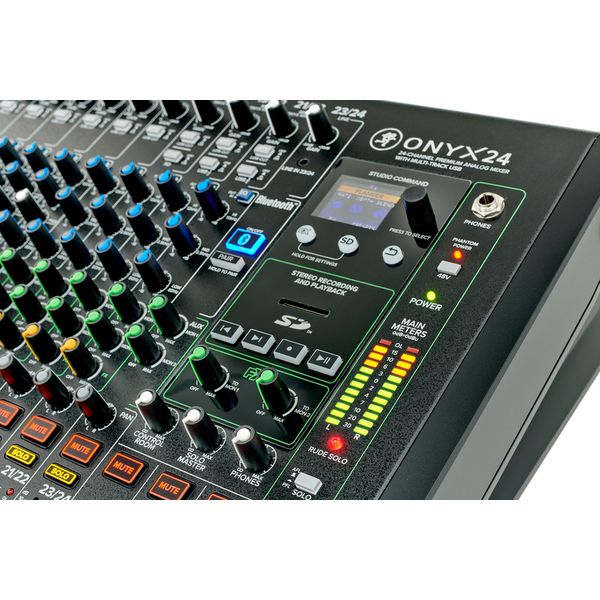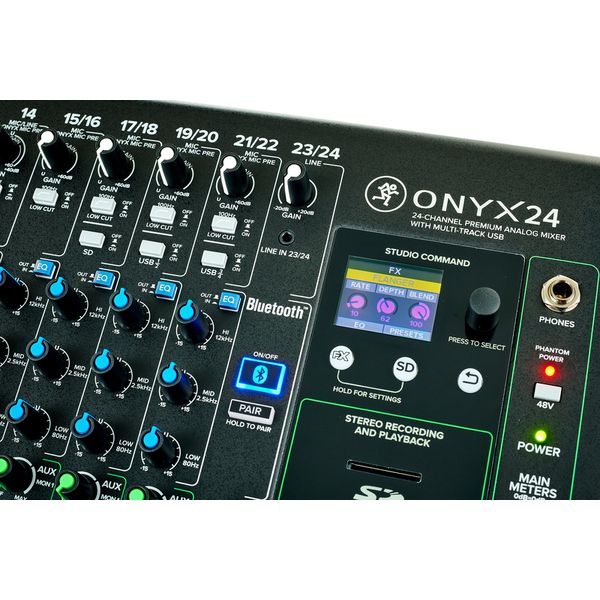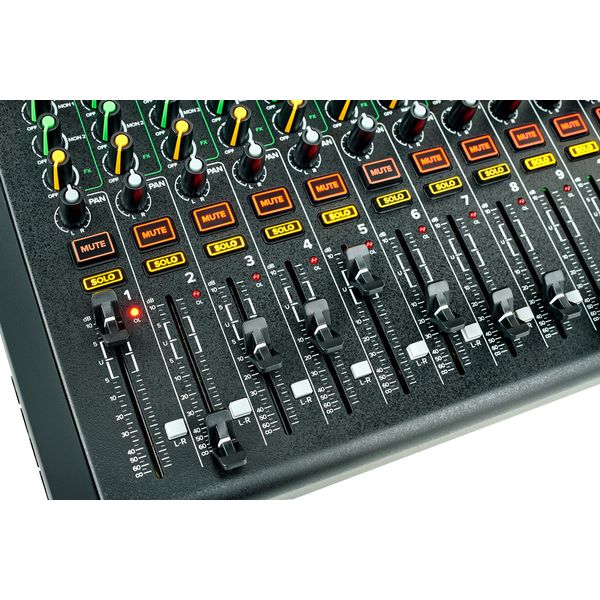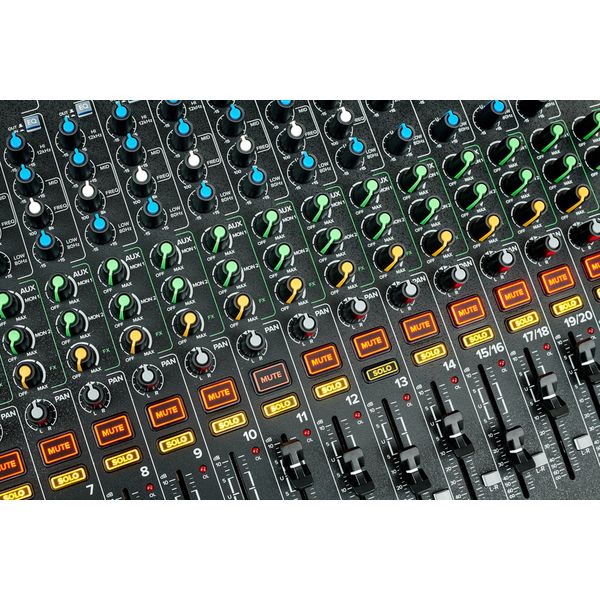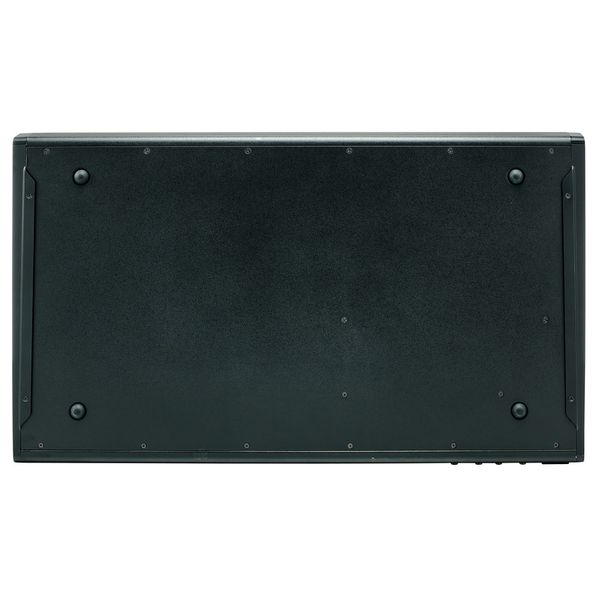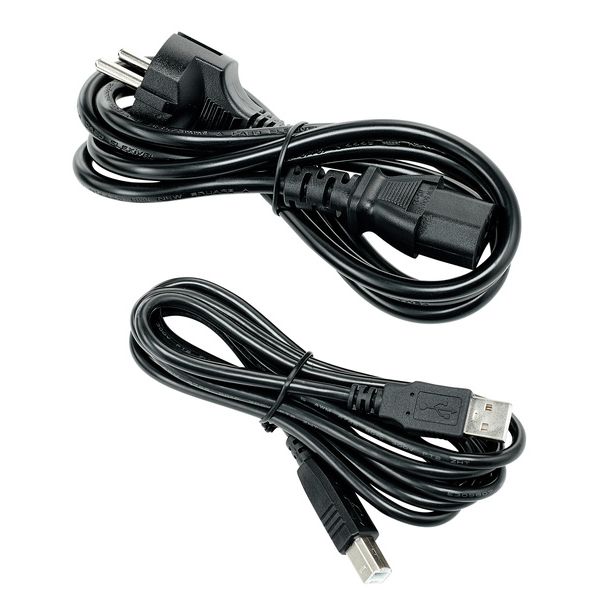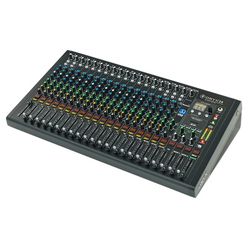Mezclador de 24 canales
- 18 entradas de micrófono con 100 Hz de recorte de graves y alimentación phantom de 48 V
- Ganancia de hasta 60 dB
- Ecualizador de 3 bandas con medios paramétricos en los canales 1-14
- Entradas Hi-Z para guitarra, bajo y otros instrumentos
- Grabación multipista de 24 bits / 96 kHz (24 pistas a través de USB en MAC / PC)
- Grabación estéreo en tarjeta SD
- Posibilidad de grabación con un solo toque
- Retorno USB asignable
- Posibilidad de reproducción a través de SD
- Entrada mini jack
- Transmisión por Bluetooth
- Hasta 6 preajustes de usuario almacenables
- Procesador de efectos incorporado con parámetros ajustables y su propio ecualizador
- Medidor de nivel LED
- Salida de sala de control separada
- Monitorizar la salida
- Salida de auriculares de 6,3 mm
- Solo de PFL / AFL
- Botón de silencio por canal
- Pantalla a todo color
Disponible desde
Enero 2024
número de artículo
500241
Precio por
1 Unidad(es)
Canales en uso simultaneamente
24
Entradas de Micrófono
18
Nº de entradas Mono de Linea
14
Entradas Stereo
5
Entradas Hi-Z
2
Alimentación Phantom
48V
Salida Master
XLR
Nº de canales auxiliares
2
Nº máximo de canales Pre-Aux
0
Conector USB
USB-B
Entradas de Interfaz de Audio
4
Salidas de Interfaz de Audio
24
Grabación Multipista
Si
Grabación a USB / SD
SD
Rec Out (Analogico)
No
Filtro paso alto
Si
Insert
Si
Salidas directas
No
EQ Parametrico
Si
Compresor
No
Pan
Si
PFL
Si
Procesador de Efectos
1
Reproductor USB
No
Reproductor Bluetooth
Si
Conector para lámpara
No
Mezclador de Matriz
No
Bolsa (nº de artículo)
No
Zonas
0
Montaje en rack
No
Ancho (mm)
640 mm
Profundidad en mm
356 mm
Profundidad (mm)
356 mm
Alto (mm)
137 mm
Peso (kg)
9,2 kg
Nº de canales en paralelo
24
Entradas de micrófono
18
Entradas de Linea Mono
14
Nº de entradas stereo
5
Nº de entradas Hi-Z
2
Alimentacion Phantom
48V
Conectores Master
XLR
Canales Auxiliares
2
Nº de Pre Aux
0
Interfaz de Audio
USB-B
Entradas de la interfaz de audio
4
Salidas de la Interfaz de Audio
24
Filtro Paso Alto
1
EQ Parametrica
1
Procesadores de Efectos
1
Lector USB
No
Conector para Lampara
No
Montaje en Rack
No
Montaje en Rack (nº de artículo)
No
Montaje en Rack (Nº de Artículo)
No
Alimentación a 110V
Si
Mostrar más
Esto compraron clientes que vieron este producto
-
Mackie Mesas de mezcla analógicas mostrar
-
Indicar Mesas de mezcla analógicas en gama de precios de 750 € - 1250 €
-
al grupo de productos Mesas de mezcla analógicas
-
al grupo de productos Mesas de Mezcla Analógicas
-
al grupo de productos Equipo de estudio y recording
-
Mostrar información del fabricante de Mackie
-
Mackie Equipo de estudio y recording vista general





